Abstract
Suspension tests were conducted on 69 commercial and 7 non-commercial disinfectant formulations to determine which classes of chemicals were most active against human rotavirus (HRV). Virus samples, in the presence of varying levels of organic matter, were exposed to the disinfectants for 1 min. The levels of remaining infectious virus were determined by plaque assay. Products were rated by their ability to reduce the levels of infectious virus by more than 3 log10 in the presence or absence of tryptose phosphate broth (peptides and inorganic salts) or fecal matter. Of the commercially-available products tested, only 25% were rated as highly and 7% as moderately effective. The remaining 68% were either effective only in the absence of any additional organic matter (48%) or were completely ineffective (20%). The majority (64%) of the moderately and highly effective products were further examined for their ability to inactivate greater than 6 log10 of infectious HRV in the presence of fecal matter or tryptose phosphate broth. With one exception, all these products were still effective. Products potentially suitable as topical antiseptics, hard surface disinfectants and instrument soaks were identified. The results emphasize the care that should be exercised in the selection of disinfectants for the control and prevention of rotaviral infections.
Full text
PDF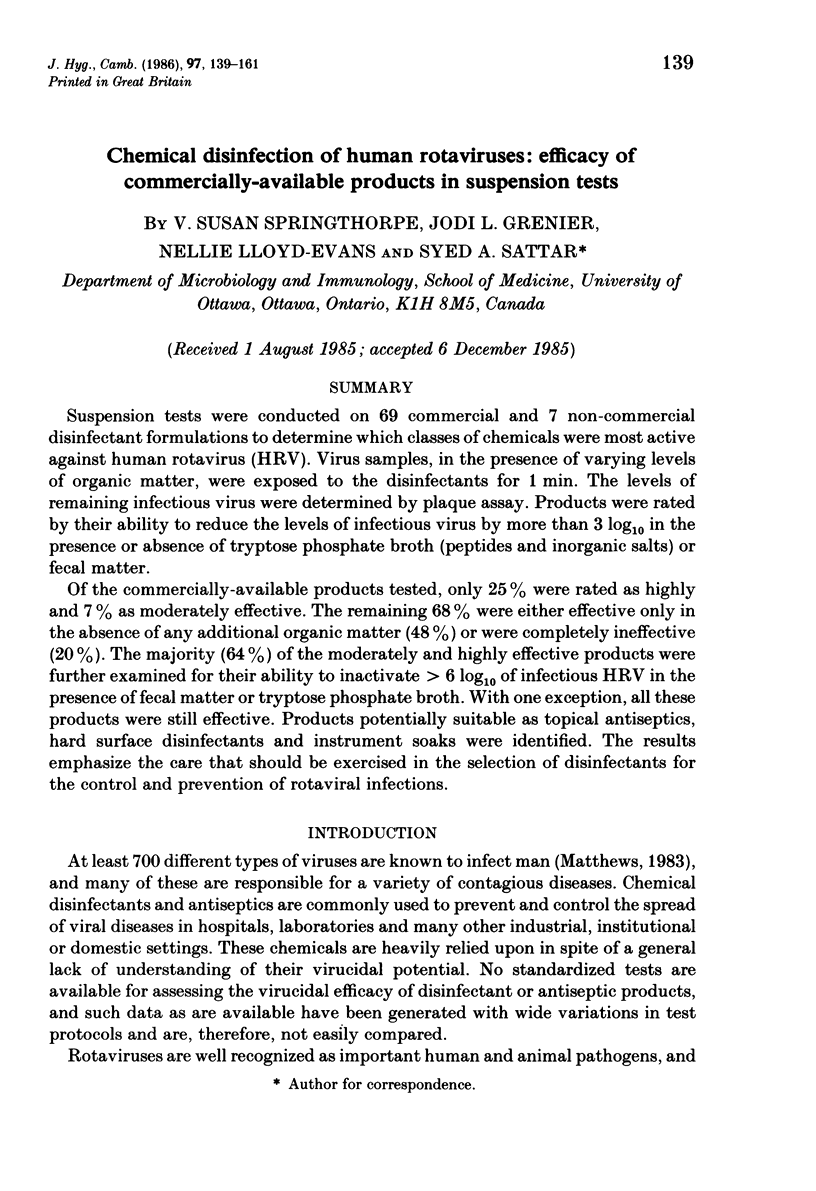
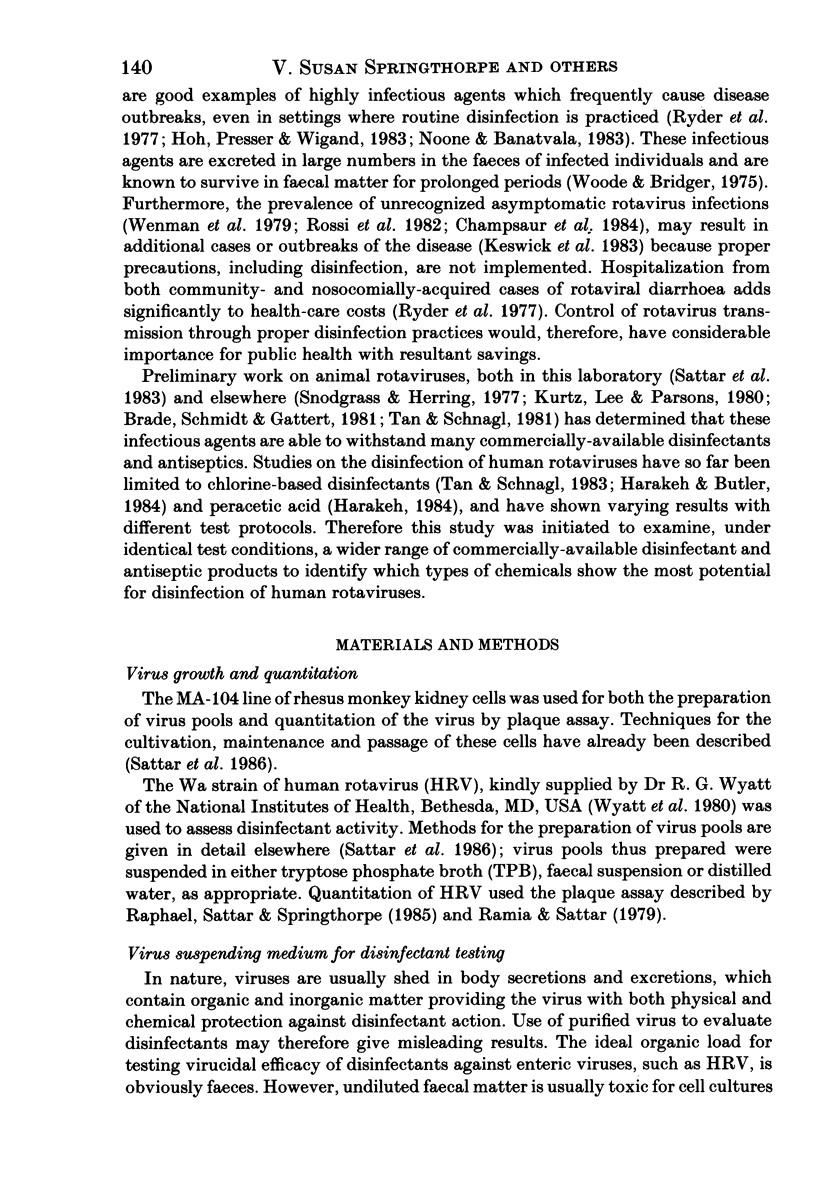
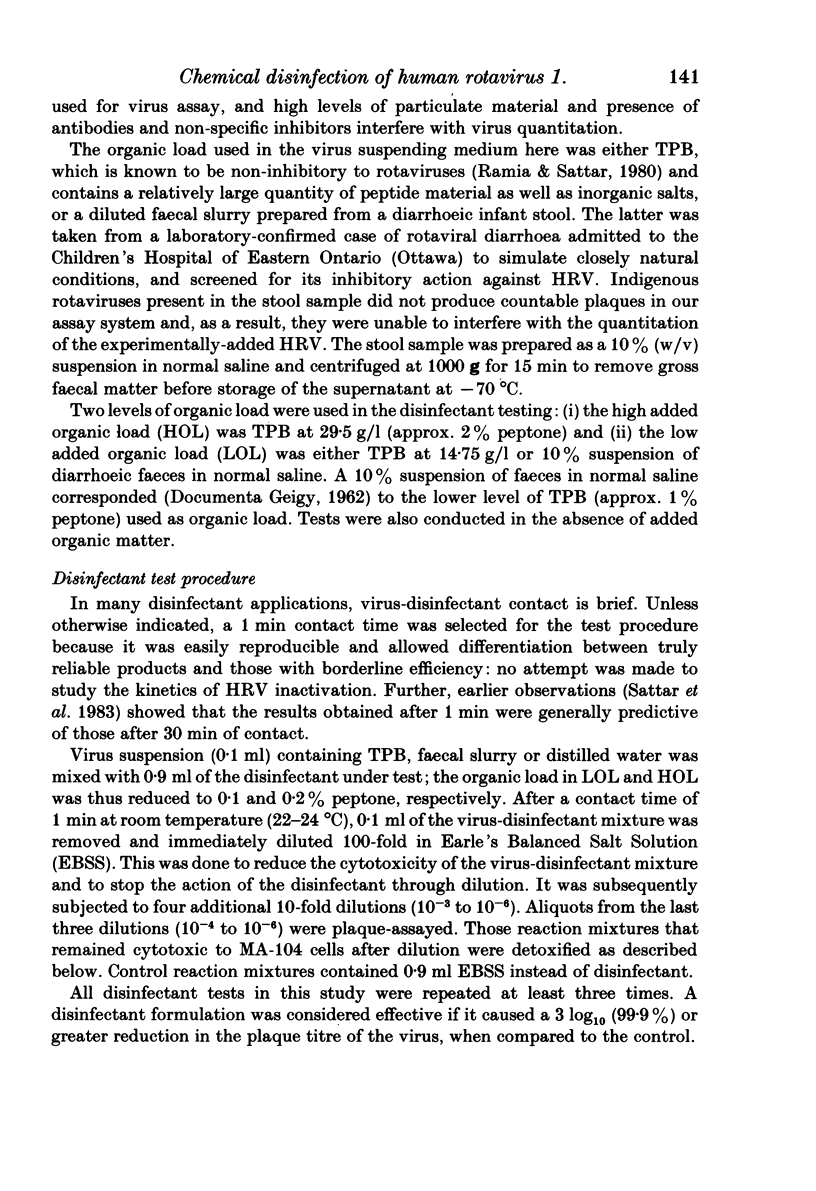
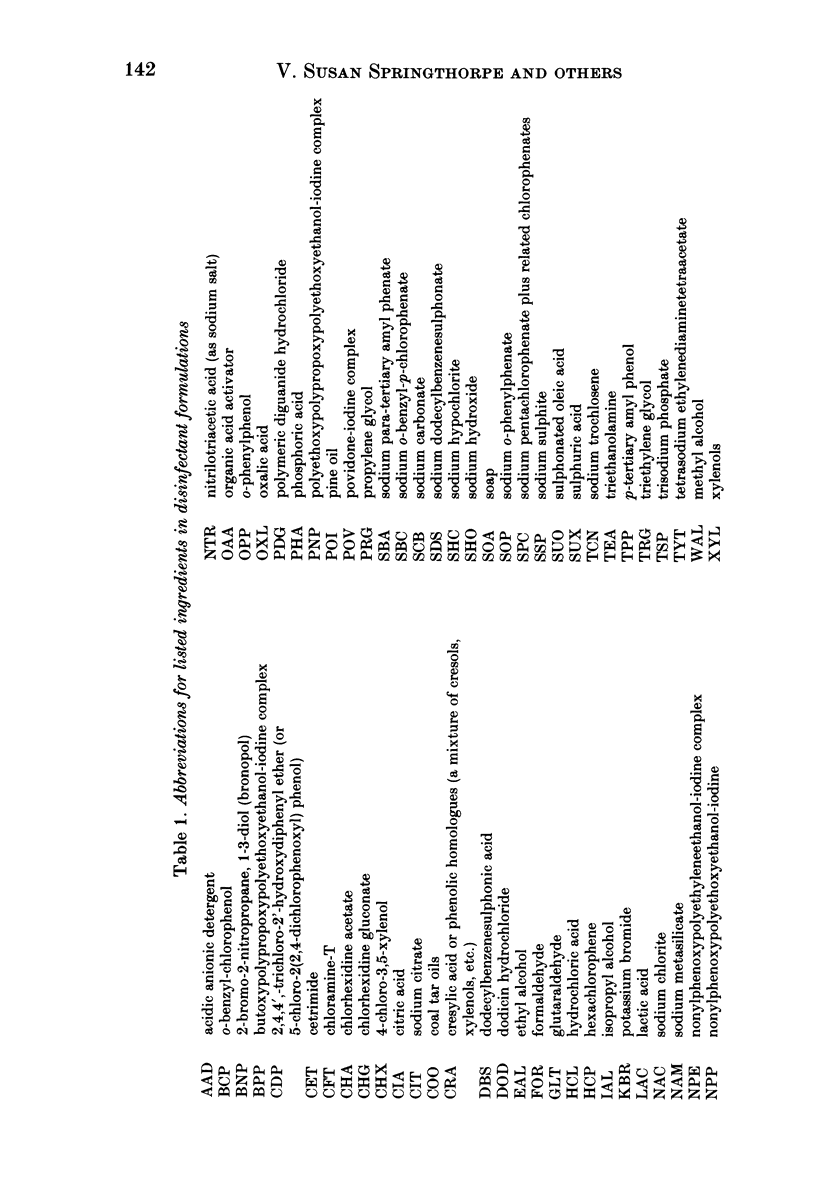

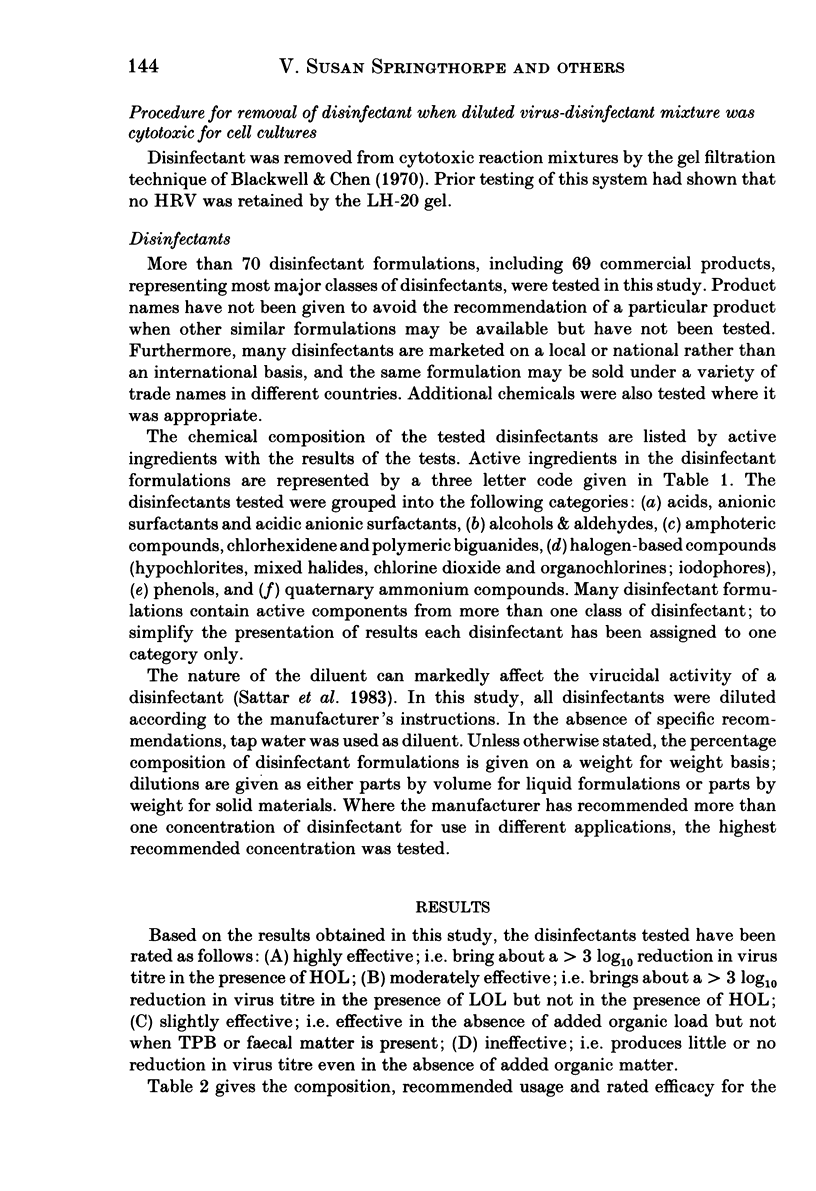

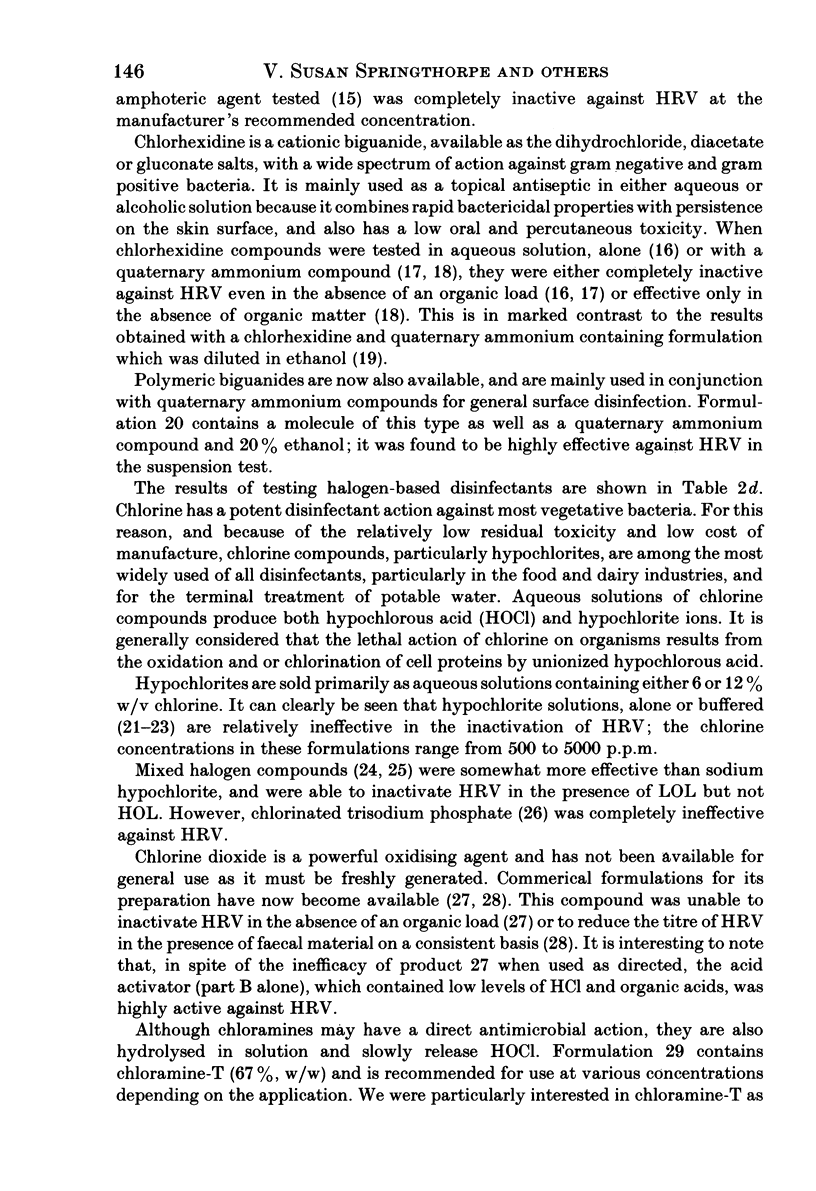


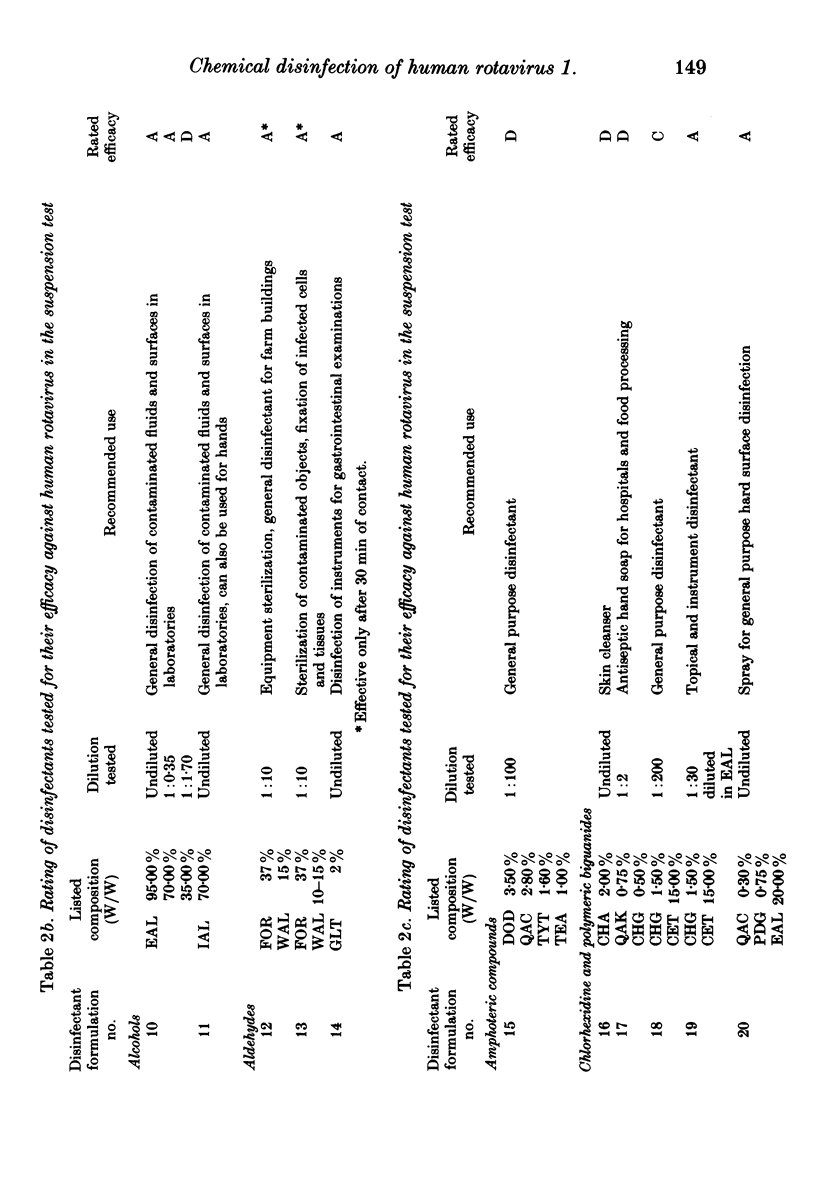
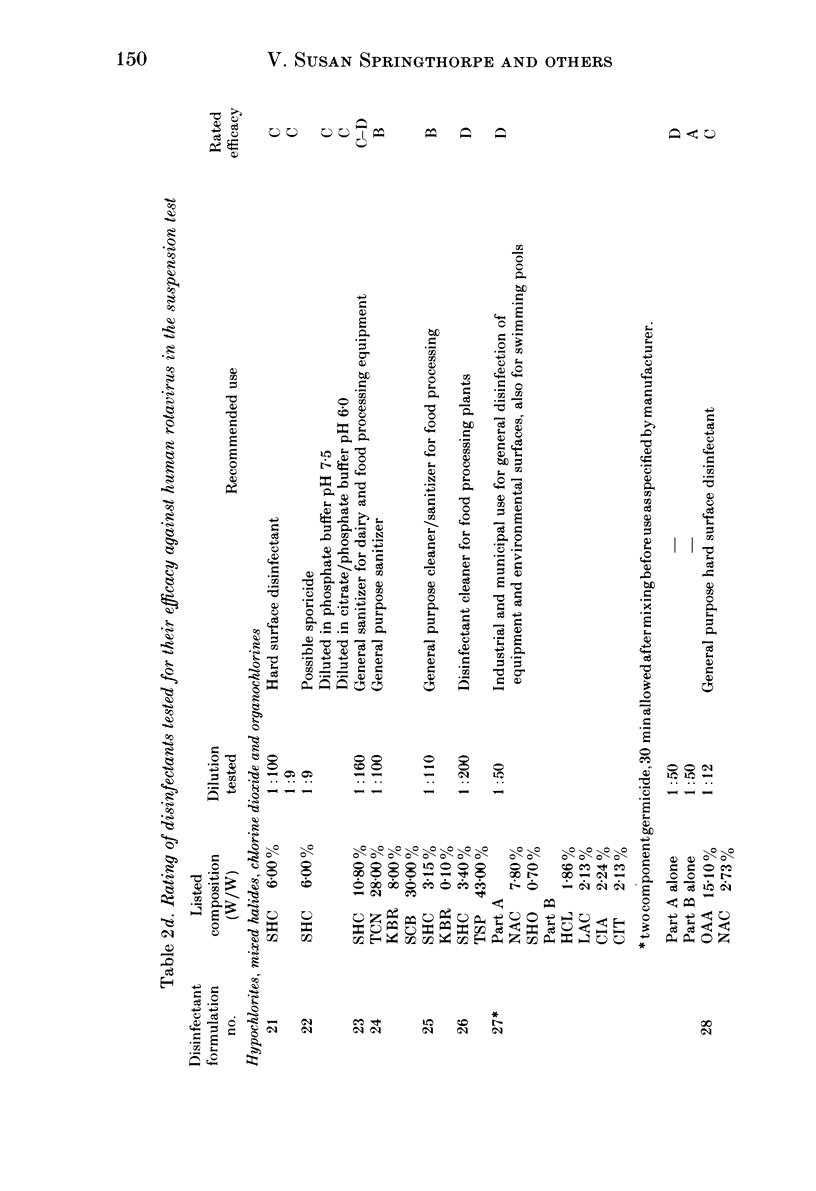

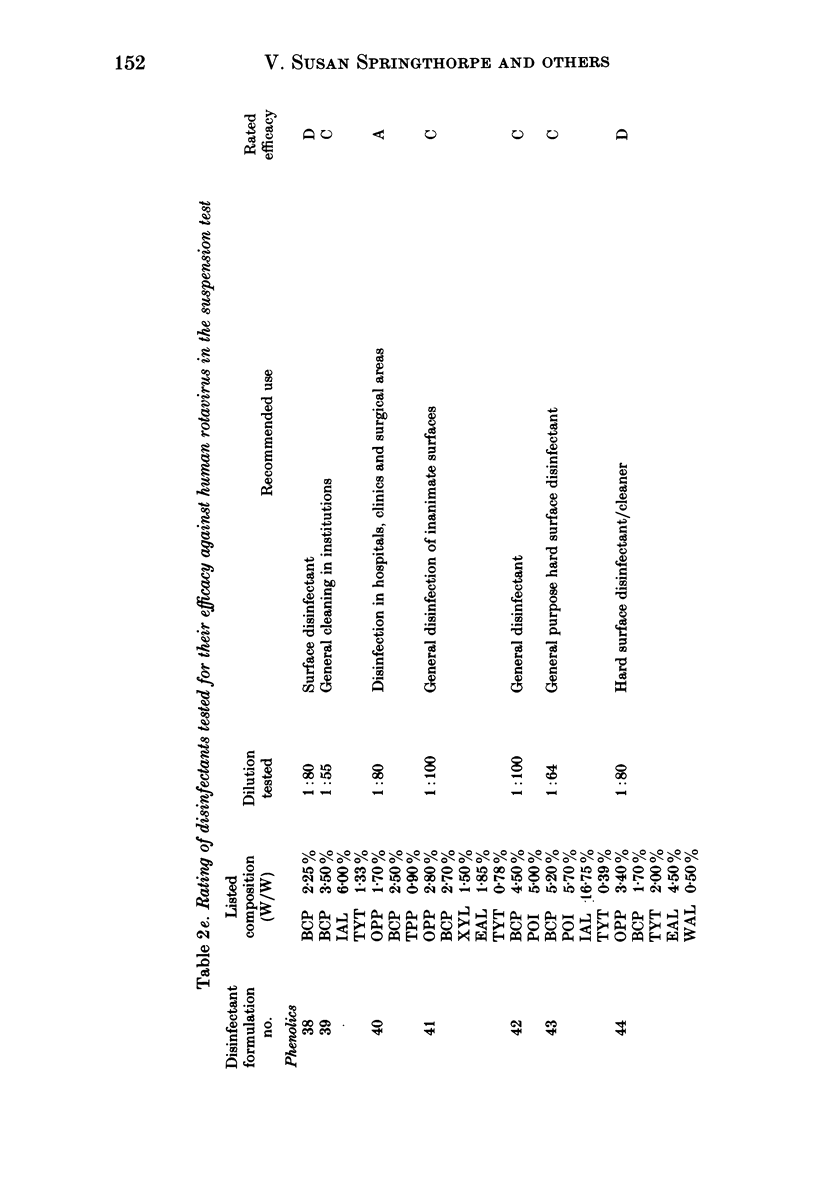
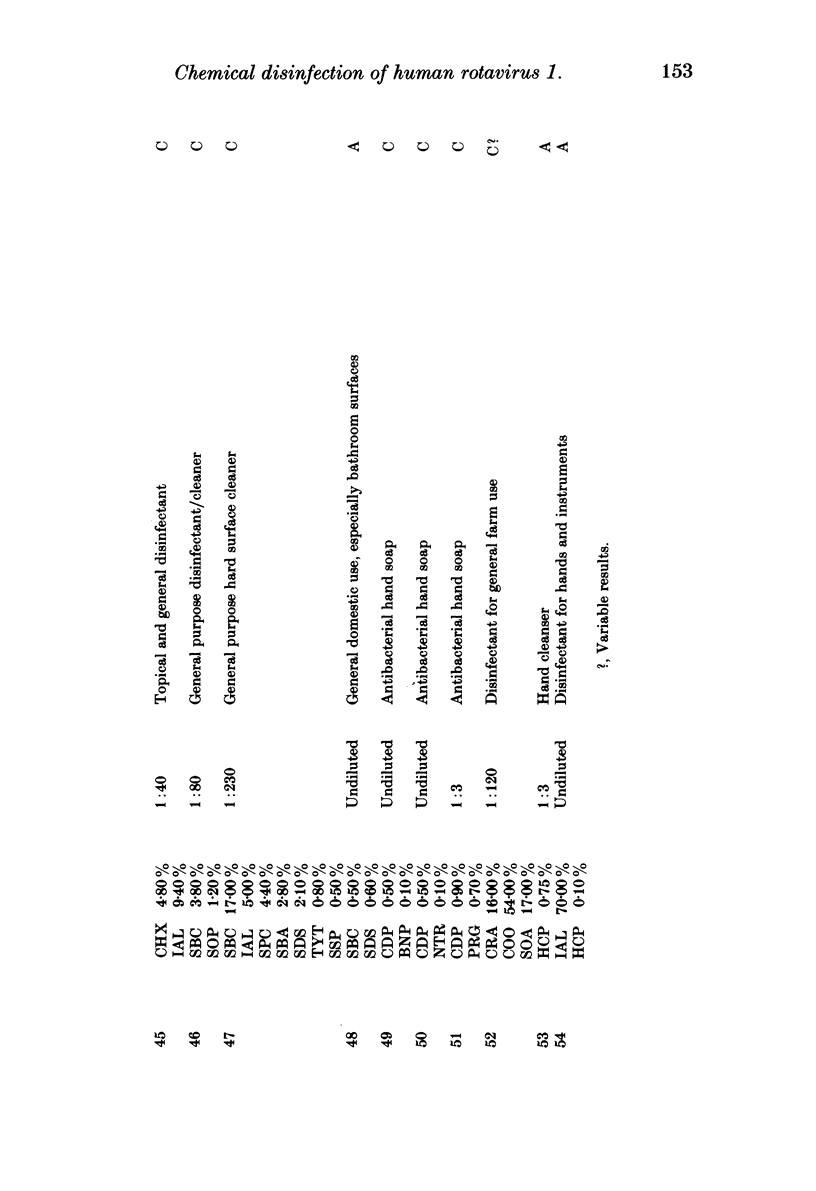
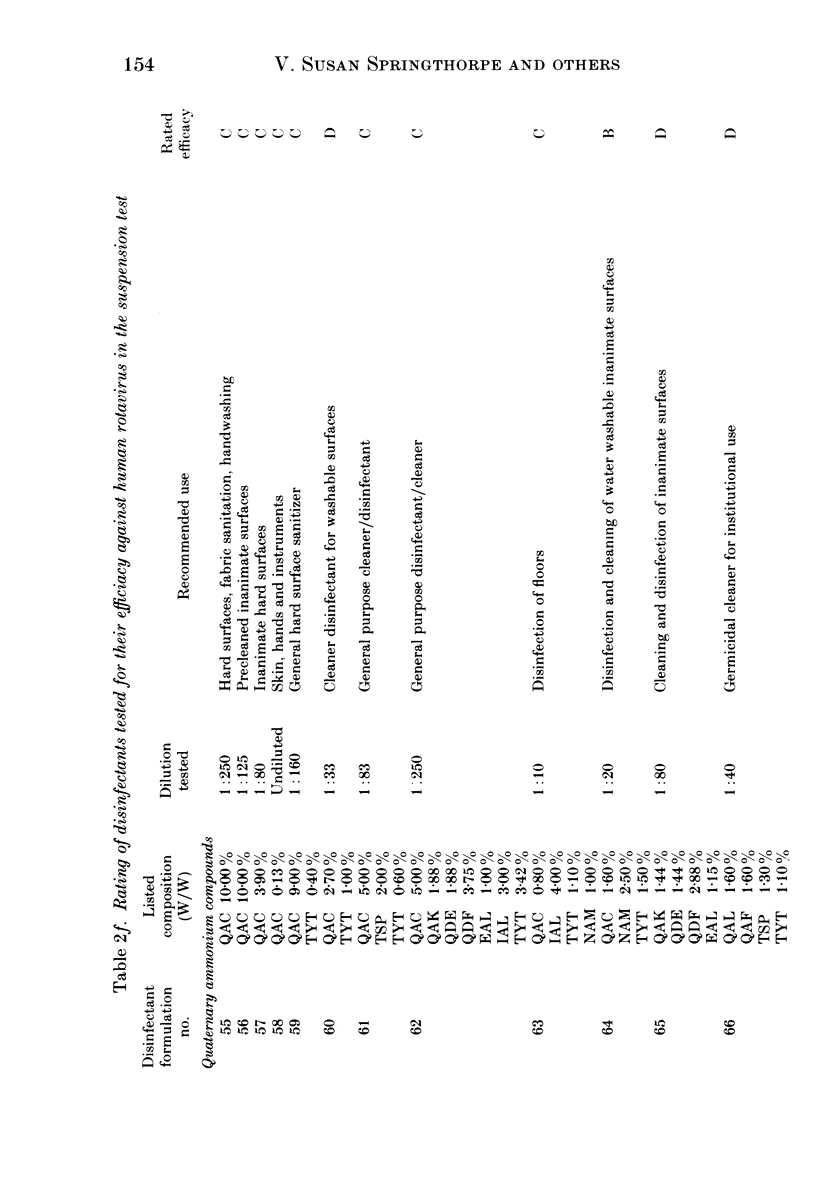
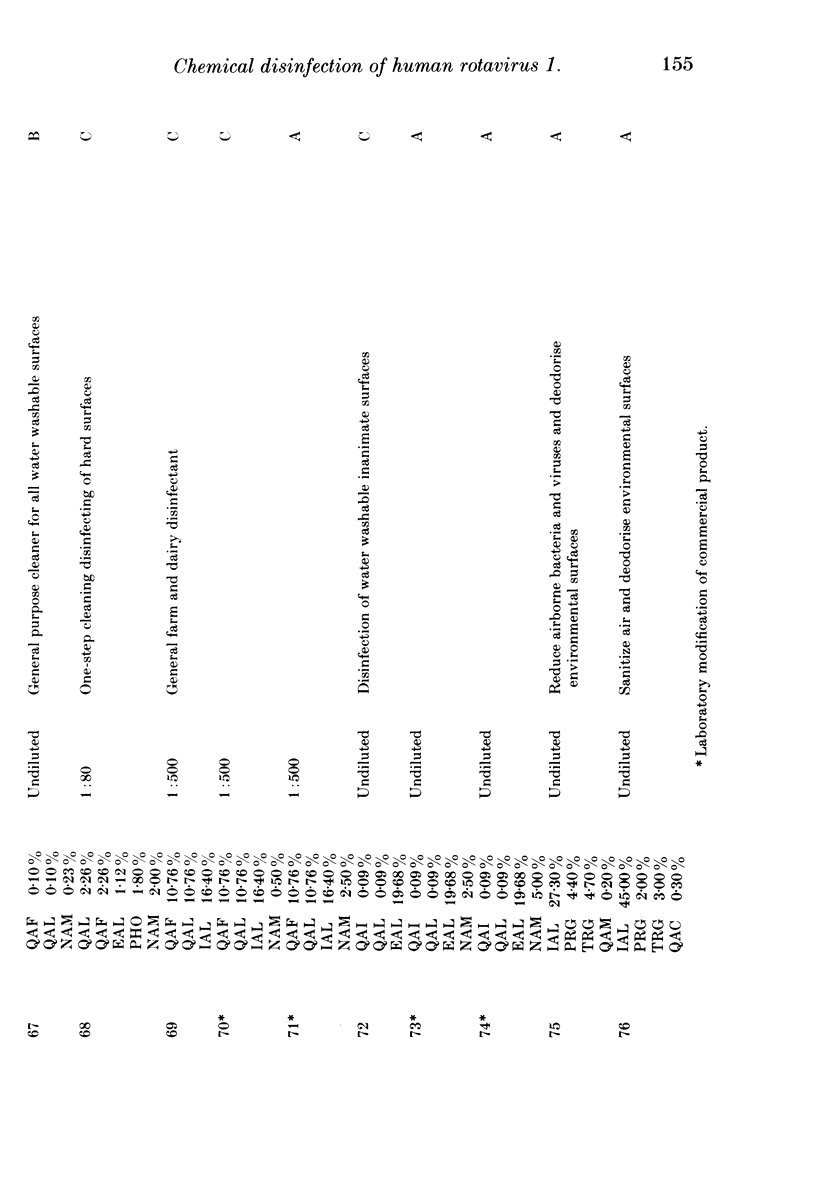
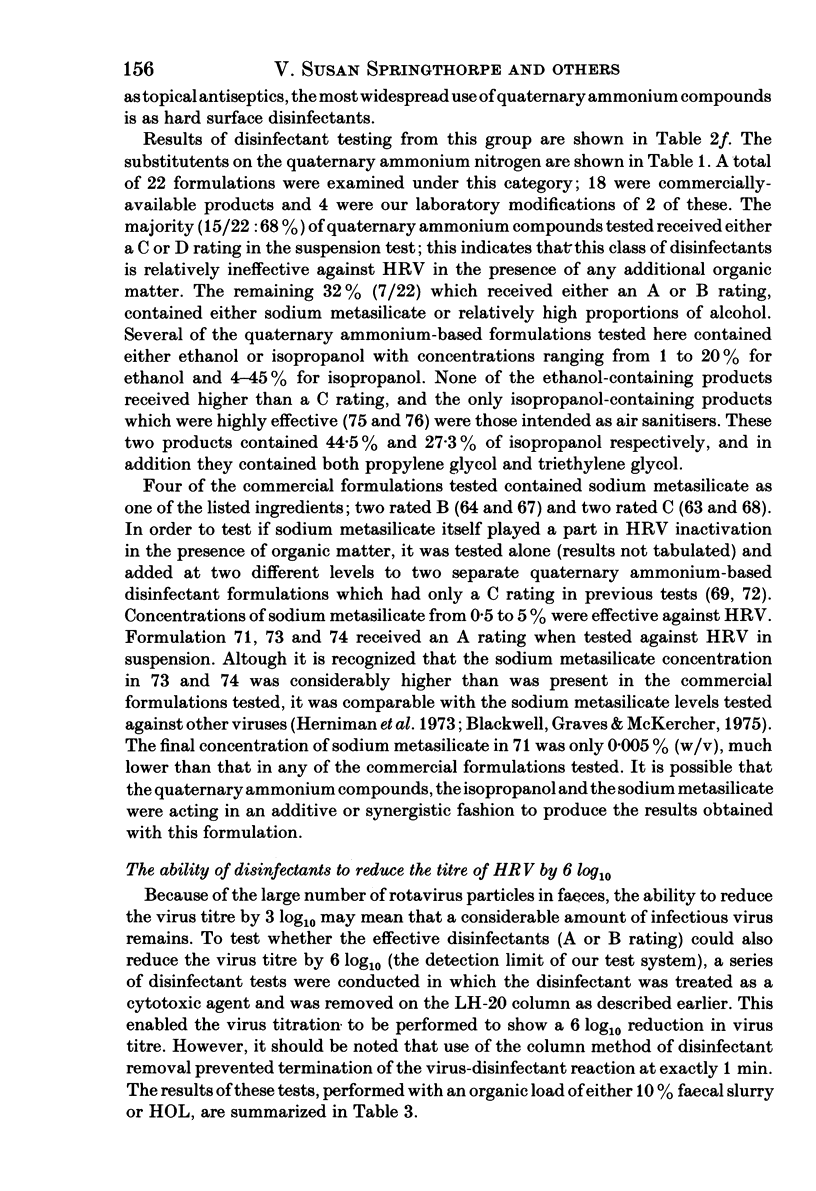
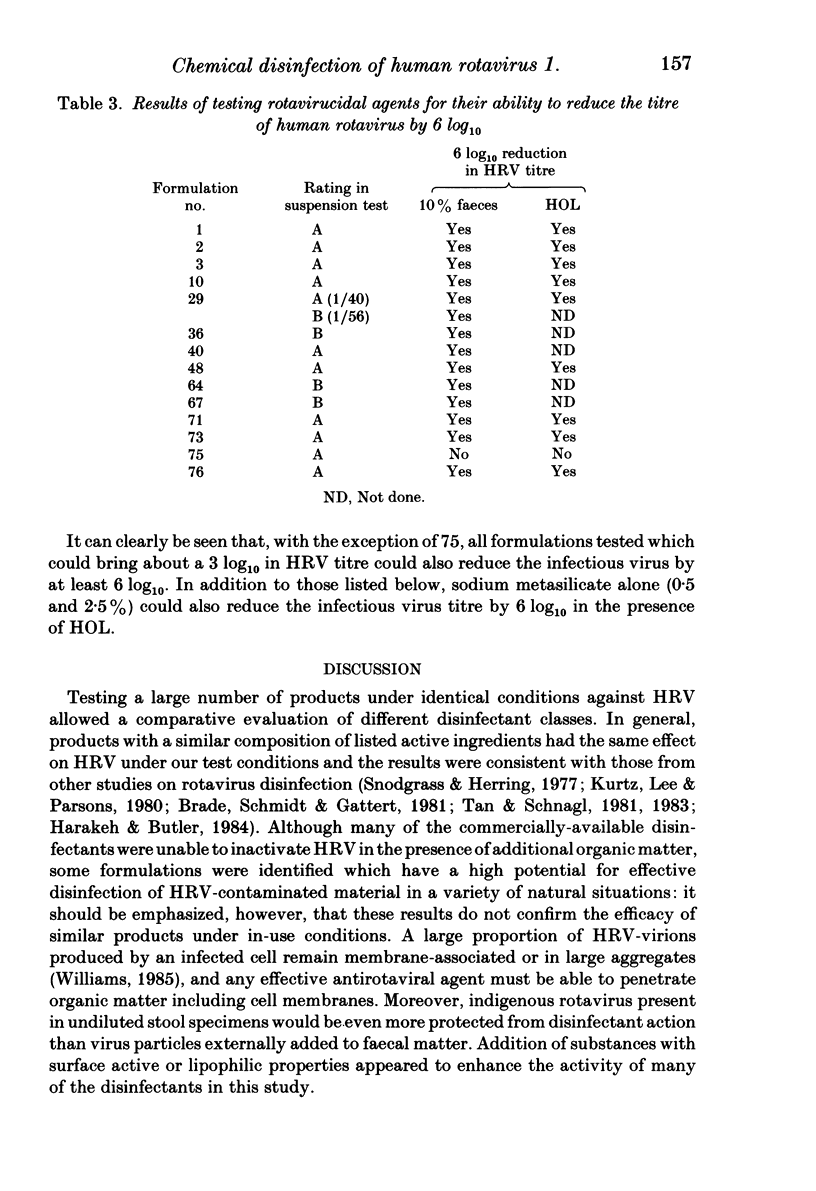


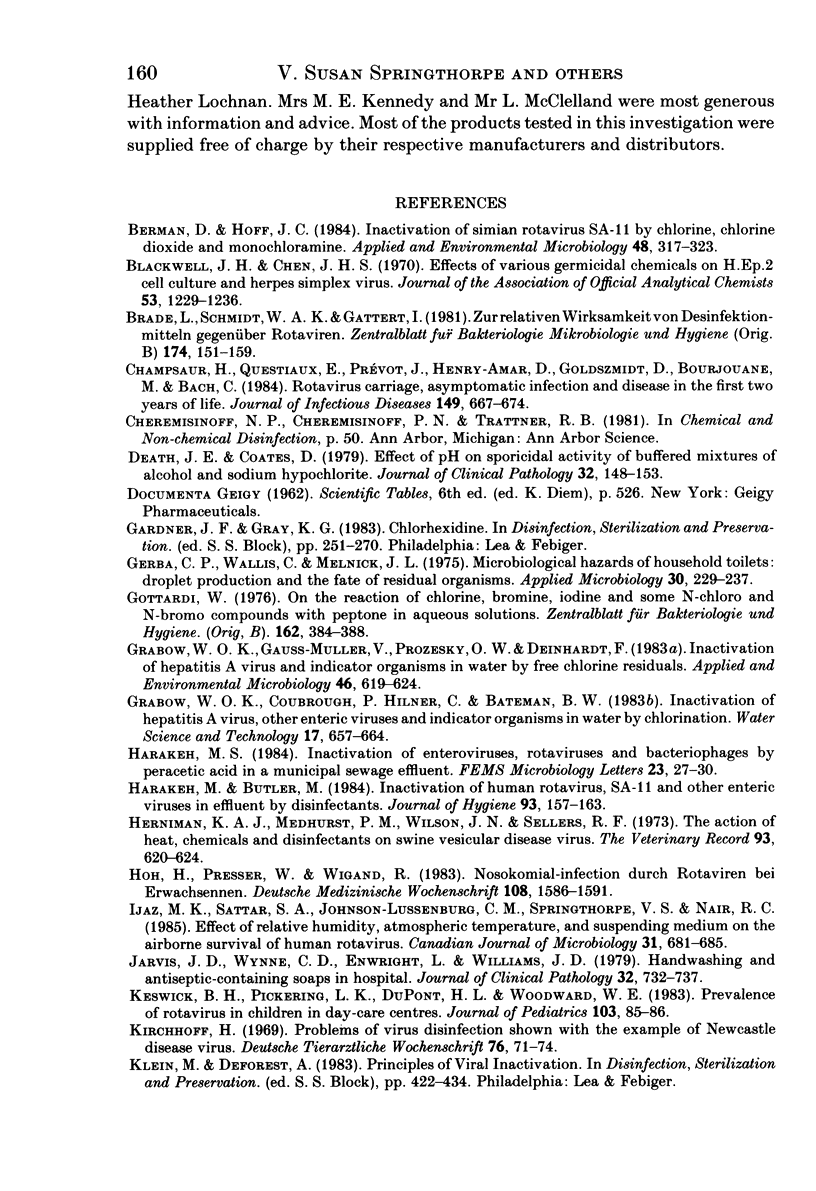
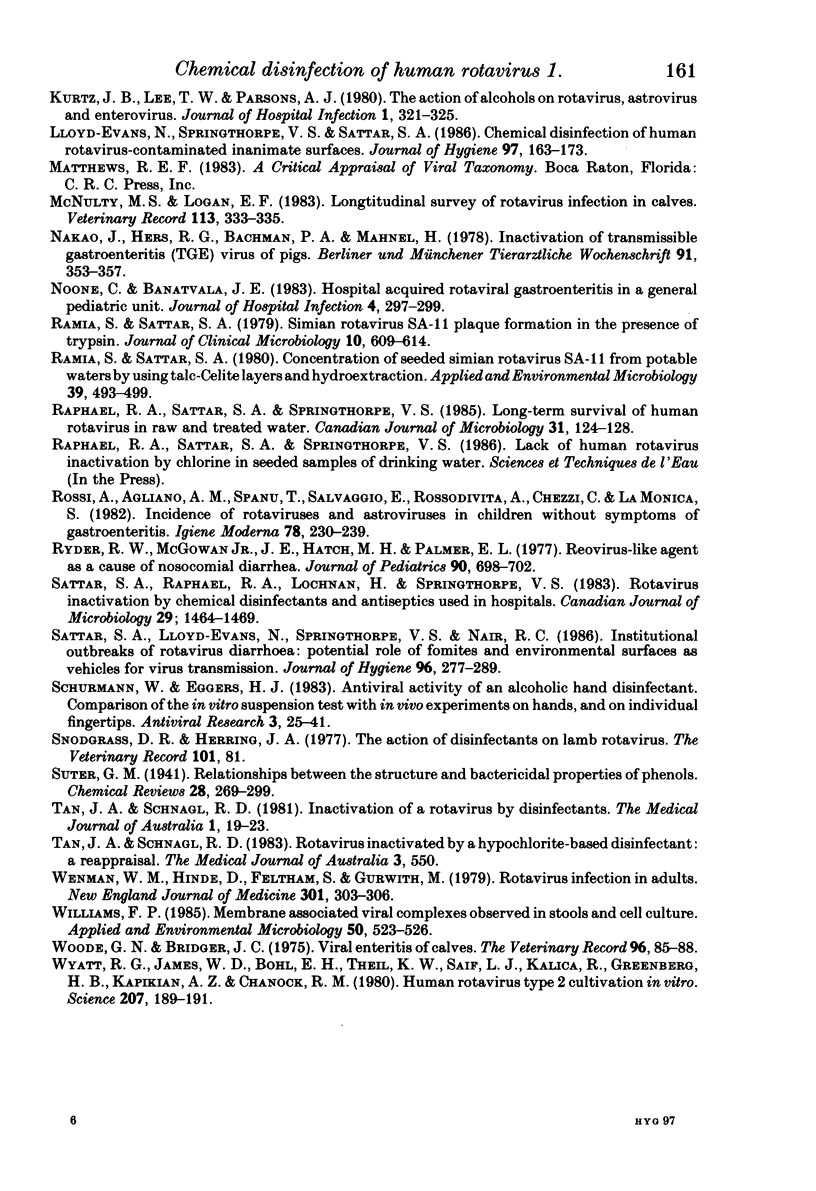
Selected References
These references are in PubMed. This may not be the complete list of references from this article.
- Berman D., Hoff J. C. Inactivation of simian rotavirus SA11 by chlorine, chlorine dioxide, and monochloramine. Appl Environ Microbiol. 1984 Aug;48(2):317–323. doi: 10.1128/aem.48.2.317-323.1984. [DOI] [PMC free article] [PubMed] [Google Scholar]
- Champsaur H., Questiaux E., Prevot J., Henry-Amar M., Goldszmidt D., Bourjouane M., Bach C. Rotavirus carriage, asymptomatic infection, and disease in the first two years of life. I. Virus shedding. J Infect Dis. 1984 May;149(5):667–674. doi: 10.1093/infdis/149.5.667. [DOI] [PubMed] [Google Scholar]
- Death J. E., Coates D. Effect of pH on sporicidal and microbicidal activity of buffered mixtures of alcohol and sodium hypochlorite. J Clin Pathol. 1979 Feb;32(2):148–152. doi: 10.1136/jcp.32.2.148. [DOI] [PMC free article] [PubMed] [Google Scholar]
- Gerba C. P., Wallis C., Melnick J. L. Microbiological hazards of household toilets: droplet production and the fate of residual organisms. Appl Microbiol. 1975 Aug;30(2):229–237. doi: 10.1128/am.30.2.229-237.1975. [DOI] [PMC free article] [PubMed] [Google Scholar]
- Grabow W. O., Gauss-Müller V., Prozesky O. W., Deinhardt F. Inactivation of hepatitis A virus and indicator organisms in water by free chlorine residuals. Appl Environ Microbiol. 1983 Sep;46(3):619–624. doi: 10.1128/aem.46.3.619-624.1983. [DOI] [PMC free article] [PubMed] [Google Scholar]
- Harakeh M., Butler M. Inactivation of human rotavirus, SA11 and other enteric viruses in effluent by disinfectants. J Hyg (Lond) 1984 Aug;93(1):157–163. doi: 10.1017/s0022172400061040. [DOI] [PMC free article] [PubMed] [Google Scholar]
- Herniman K. A., Medhurst P. M., Wilson J. N., Sellers R. F. The action of heat, chemicals and disinfectants on swine vesicular disease virus. Vet Rec. 1973 Dec 15;93(24):620–624. doi: 10.1136/vr.93.24.620. [DOI] [PubMed] [Google Scholar]
- Höh H., Presser W., Wigand R. Nosokomial-Infektion durch Rotaviren bei Erwachsenen. Dtsch Med Wochenschr. 1983 Oct 21;108(42):1586–1591. doi: 10.1055/s-2008-1069789. [DOI] [PubMed] [Google Scholar]
- Ijaz M. K., Sattar S. A., Johnson-Lussenburg C. M., Springthorpe V. S., Nair R. C. Effect of relative humidity, atmospheric temperature, and suspending medium on the airborne survival of human rotavirus. Can J Microbiol. 1985 Aug;31(8):681–685. doi: 10.1139/m85-129. [DOI] [PubMed] [Google Scholar]
- Jarvis J. D., Wynne C. D., Enwright L., Williams J. D. Handwashing and antiseptic-containing soaps in hospital. J Clin Pathol. 1979 Jul;32(7):732–737. doi: 10.1136/jcp.32.7.732. [DOI] [PMC free article] [PubMed] [Google Scholar]
- Keswick B. H., Pickering L. K., DuPont H. L., Woodward W. E. Prevalence of rotavirus in children in day care centers. J Pediatr. 1983 Jul;103(1):85–86. doi: 10.1016/s0022-3476(83)80785-9. [DOI] [PubMed] [Google Scholar]
- Kirchhoff H. Probleme der Virusdesinfektion am praktischen Beispiel des Newcastle Disease-Virus. Dtsch Tierarztl Wochenschr. 1969 Feb 1;76(3):71–74. [PubMed] [Google Scholar]
- Kurtz J. B., Lee T. W., Parsons A. J. The action of alcohols on rotavirus, astrovirus and enterovirus. J Hosp Infect. 1980 Dec;1(4):321–325. doi: 10.1016/0195-6701(80)90008-0. [DOI] [PubMed] [Google Scholar]
- Lloyd-Evans N., Springthorpe V. S., Sattar S. A. Chemical disinfection of human rotavirus-contaminated inanimate surfaces. J Hyg (Lond) 1986 Aug;97(1):163–173. doi: 10.1017/s0022172400064445. [DOI] [PMC free article] [PubMed] [Google Scholar]
- McNulty M. S., Logan E. F. Longitudinal survey of rotavirus infection in calves. Vet Rec. 1983 Oct 8;113(15):333–335. doi: 10.1136/vr.113.15.333. [DOI] [PubMed] [Google Scholar]
- Nakao J., Hess R. G., Bachmann P. A., Mahnel H. Zur Widerstandsfähigkeit und Inaktivierung des Virus der übertragbaren Gastroenteritis (TGE) der Schwiene. Berl Munch Tierarztl Wochenschr. 1978 Sep 15;91(18):353–357. [PubMed] [Google Scholar]
- Noone C., Banatvala J. E. Hospital acquired rotaviral gastroenteritis in a general paediatric unit. J Hosp Infect. 1983 Sep;4(3):297–299. doi: 10.1016/0195-6701(83)90031-2. [DOI] [PubMed] [Google Scholar]
- Ramia S., Sattar S. A. Concentration of seeded simian rotavirus SA-11 from potable waters by using talc-celite layers and hydroextraction. Appl Environ Microbiol. 1980 Mar;39(3):493–499. doi: 10.1128/aem.39.3.493-499.1980. [DOI] [PMC free article] [PubMed] [Google Scholar]
- Ramia S., Sattar S. A. Simian rotavirus SA-11 plaque formation in the presence of trypsin. J Clin Microbiol. 1979 Nov;10(5):609–614. doi: 10.1128/jcm.10.5.609-614.1979. [DOI] [PMC free article] [PubMed] [Google Scholar]
- Raphael R. A., Sattar S. A., Springthorpe V. S. Long-term survival of human rotavirus in raw and treated river water. Can J Microbiol. 1985 Feb;31(2):124–128. doi: 10.1139/m85-024. [DOI] [PubMed] [Google Scholar]
- Ryder R. W., McGowan J. E., Hatch M. H., Palmer E. L. Reovirus-like agent as a cause of nosocomial diarrhea in infants. J Pediatr. 1977 May;90(5):698–702. doi: 10.1016/s0022-3476(77)81230-4. [DOI] [PubMed] [Google Scholar]
- Sattar S. A., Lloyd-Evans N., Springthorpe V. S., Nair R. C. Institutional outbreaks of rotavirus diarrhoea: potential role of fomites and environmental surfaces as vehicles for virus transmission. J Hyg (Lond) 1986 Apr;96(2):277–289. doi: 10.1017/s0022172400066055. [DOI] [PMC free article] [PubMed] [Google Scholar]
- Sattar S. A., Raphael R. A., Lochnan H., Springthorpe V. S. Rotavirus inactivation by chemical disinfectants and antiseptics used in hospitals. Can J Microbiol. 1983 Oct;29(10):1464–1469. doi: 10.1139/m83-225. [DOI] [PubMed] [Google Scholar]
- Schürmann W., Eggers H. J. Antiviral activity of an alcoholic hand disinfectant. Comparison of the in vitro suspension test with in vivo experiments on hands, and on individual fingertips. Antiviral Res. 1983 Mar;3(1):25–41. doi: 10.1016/0166-3542(83)90012-8. [DOI] [PubMed] [Google Scholar]
- Snodgrass D. R., Herring J. A. The action of disinfectants on lamb rotavirus. Vet Rec. 1977 Jul 23;101(4):81–81. doi: 10.1136/vr.101.4.81-a. [DOI] [PubMed] [Google Scholar]
- Tan J. A., Schnagl R. D. Inactivation of a rotavirus by disinfectants. Med J Aust. 1981 Jan 10;1(1):19–23. doi: 10.5694/j.1326-5377.1981.tb135281.x. [DOI] [PubMed] [Google Scholar]
- Tan J. A., Schnagl R. D. Rotavirus inactivated by a hypochlorite-based disinfectant: a reappraisal. Med J Aust. 1983 Jun 11;1(12):550–550. doi: 10.5694/j.1326-5377.1983.tb136212.x. [DOI] [PubMed] [Google Scholar]
- Wenman W. M., Hinde D., Feltham S., Gurwith M. Rotavirus infection in adults. Results of a prospective family study. N Engl J Med. 1979 Aug 9;301(6):303–306. doi: 10.1056/NEJM197908093010604. [DOI] [PubMed] [Google Scholar]
- Williams F. P., Jr Membrane-associated viral complexes observed in stools and cell culture. Appl Environ Microbiol. 1985 Aug;50(2):523–526. doi: 10.1128/aem.50.2.523-526.1985. [DOI] [PMC free article] [PubMed] [Google Scholar]
- Woode G. N., Bridger J. C. Viral enteritis of calves. Vet Rec. 1975 Jan 25;96(4):85–88. doi: 10.1136/vr.96.4.85. [DOI] [PubMed] [Google Scholar]
- Wyatt R. G., James W. D., Bohl E. H., Theil K. W., Saif L. J., Kalica A. R., Greenberg H. B., Kapikian A. Z., Chanock R. M. Human rotavirus type 2: cultivation in vitro. Science. 1980 Jan 11;207(4427):189–191. doi: 10.1126/science.6243190. [DOI] [PubMed] [Google Scholar]


